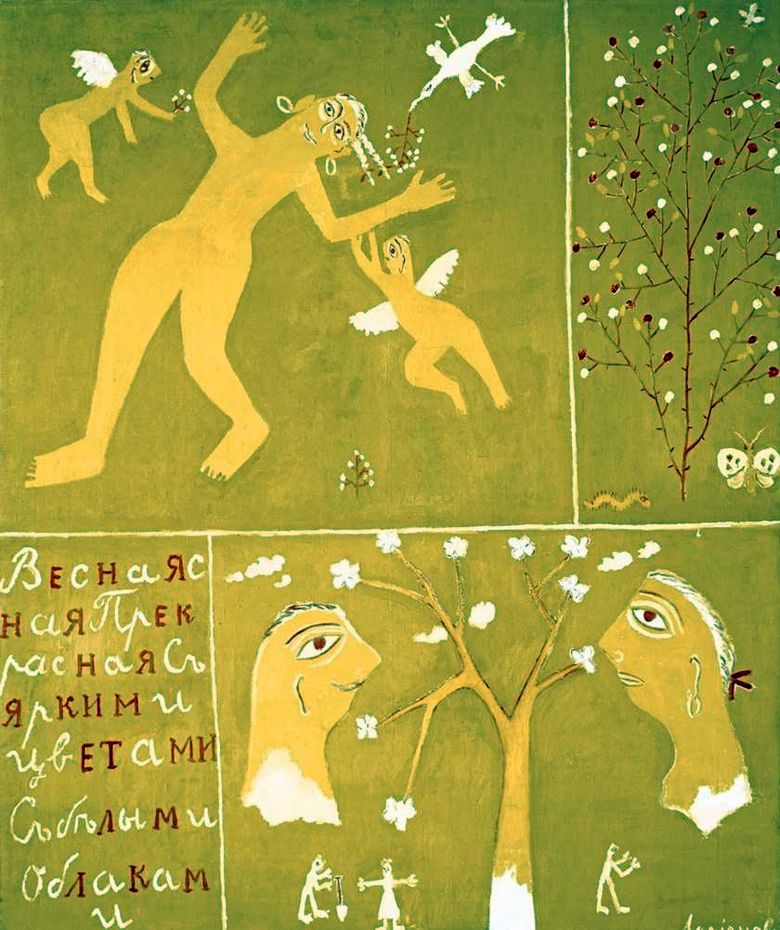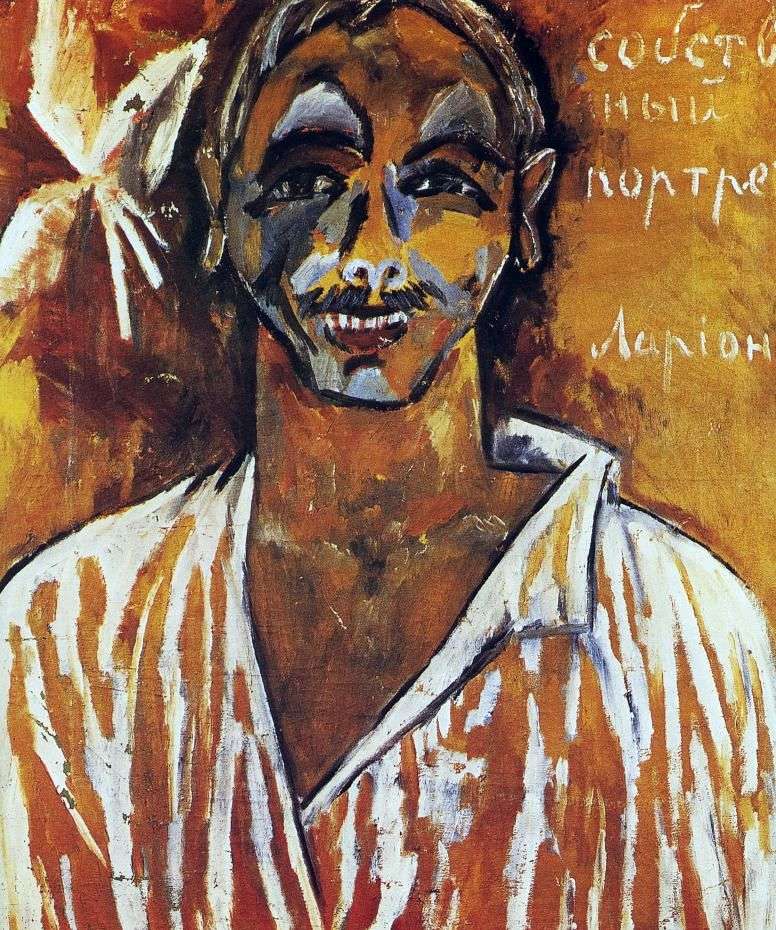
The leader of the Russian avant-garde movement of the late 1900s and early 1910s, MF Larionov, attached great importance to sincere, naive and, at first glance, frivolous children’s creativity, since it always comes directly from the depths of the child’s consciousness.
Imitating a naive childish drawing, the artist sought to create works that were as sincere and direct. Looking at the world through the eyes of a child, Larionov wrote a cycle of paintings “The Seasons”, where each season personifies the uncomplicated image of a female figure, and next follows an explanation written deliberately untidy. However, the embodiment of the plan was not childishly profound. Spring is surrounded by clumsy winged angels, the spring bird carries a twig with its blossoming buds; next to the right, fenced off by a vertical stripe, grows the very tree that can be interpreted as the biblical Tree of Knowledge.
In the right part of the lower “register” of the picture, the male and female profiles are depicted, on both sides facing the Tree of Knowledge, images of primitive Adam and Eve, who are apparently experiencing arousal of tender feelings, just as nature itself awakens, and, perhaps, already tasted the Forbidden fruit. In the same space, just below, another biblical story is guessed – “Expulsion from Paradise.” In the left margin of the same lower register follows a naive description of spring, supposedly made by a child: “Spring is clear, beautiful. With bright colors, with white clouds,” in which, however, a certain slyness of the artist is felt. After all, it is no coincidence that in the subtitle of the name we read “New Primitive” and mentally end “… on the eternal topic.”
 Printemps Seasons (New Primitive) – Mikhail Larionov
Printemps Seasons (New Primitive) – Mikhail Larionov Resting Soldier by Mikhail Larionov
Resting Soldier by Mikhail Larionov Still Life with a Tray and Cancer by Mikhail Larionov
Still Life with a Tray and Cancer by Mikhail Larionov Rooster and chicken by Mikhail Larionov
Rooster and chicken by Mikhail Larionov Self-Portrait (Soldier Cycle) by Mikhail Larionov
Self-Portrait (Soldier Cycle) by Mikhail Larionov Le soldat au repos – Mikhail Larionov
Le soldat au repos – Mikhail Larionov Autorretrato (ciclo del soldado) – Mikhail Larionov
Autorretrato (ciclo del soldado) – Mikhail Larionov Autoportrait (cycle de soldat) – Mikhail Larionov
Autoportrait (cycle de soldat) – Mikhail Larionov